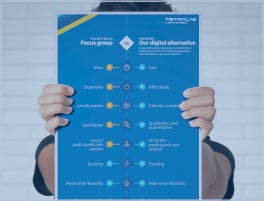A hero product image is the lead image used to illustrate a product on an ecommerce site, such as Amazon, Tesco, Target, Walmart or Alibaba. It is this product image which features in category and search results. It is a brand’s first opportunity to showcase its products and grab the attention of online shoppers.
Our packaging design research team has recently seen growing demand for product hero image testing. In particular, clients are looking to optimize their ecommerce product images for the mobile web.
In this blogpost, we examine this trend in hero product image optimization for third-party ecommerce websites, and its drivers. We share our considerations and tips for creating an effective product image, alongside examples of optimized ecommerce images. And we outline our best practices for ecommerce hero image testing.
Why this trend in ecommerce product image optimization?
The importance of ecommerce is growing. Many brands are seeing the ecommerce share of their total retail sales continuously increase. And as shoppers are turning to ecommerce, so are brands. From optimizing their online presence to increasing advertising spend on large ecommerce sites, they are looking for ways to increase sales and grow their market share online.
The online shopping experience was once just a reflection of the offline shopping experience. Accordingly, hero ecommerce images were initially just pack shots: a photo of the physical product packaging.
But over the past few years, the online shopping experience has become much more sophisticated. Brands realized that they could make better use of that small, stamp-size space to showcase their product. They started to create smarter hero images, in an effort to increase conversion.
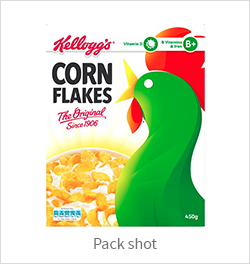
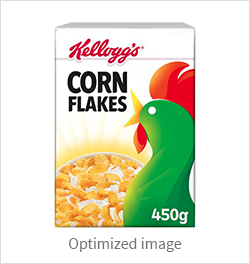
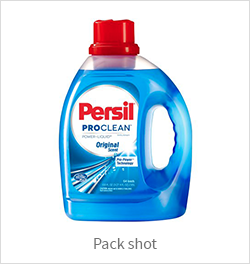
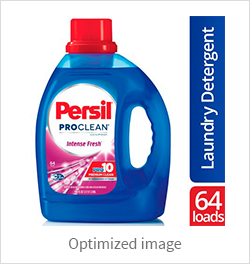
Example 1. Pack shots vs optimized hero ecommerce product images: simplified redesign and highlighting practical information. Kellogg’s Corn Flakes and Persil ProClean. Sources: Tesco.com and Walmart.com
A focus on mobile-ready hero product images for ecommerce websites
As ecommerce sales increase, so are sales driven from mobile devices. In many categories, sales through mobile web and apps have already overtaken sales generated from desktop devices.
The traditional practice of using photos of packaging as hero images is especially inconvenient for shoppers scrolling through ecommerce websites on their mobile phones. These pack shots do not clearly communicate the necessary information.
Indeed, the University of Cambridge, in collaboration with Unilever, is driving for global standardized hero images for mobile, to improve the mobile shopping experience. And at MetrixLab, we’ve also seen a growing client need to enhance hero images for mobile.
Therefore, mobile-ready ecommerce product images provide a key opportunity to improve online sales conversions.
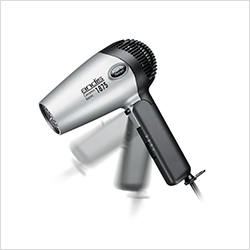
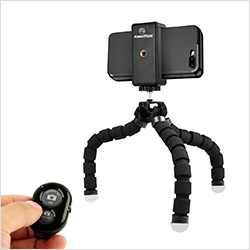
Example 2. Optimized hero product images: highlighting product benefit. Andis Fold-N-Go and KobraTech flexible tripod. Sources: Target.com and Amazon.com
How to optimize your ecommerce product hero image
In our experience, an optimized product hero image can typically increase sales by 10% to 30%.
In line with several of our nine best practices for creating powerful packaging designs, a good hero image has three roles: to create visibility, to communicate, and to persuade. It should grab shoppers’ attention and be immediately identifiable. It should tell them what the product is and why they should buy it. And it should persuade them to click through and buy the product.
Another consideration to take into account when optimizing your ecommerce product image is findability. Ecommerce facilitates habitual buying patterns: people often come to the website knowing what they want to buy. If your ecommerce hero image differs from what your current customers are used to or expect, this may lead to frustration and loss of sales.
An optimized ecommerce product image can take various forms. It can feature an (edited) image of the packaging and/or product, as well as off-pack communications (visual and/or verbal). Take a look at our best practices for ecommerce hero product images below.
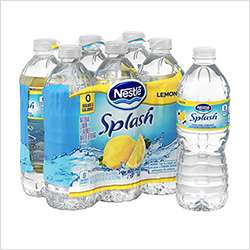
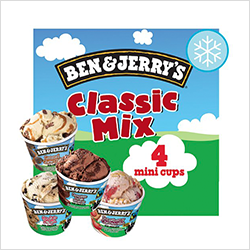
Example 3. Optimized ecommerce product images: multipack item pull-outs. Nestlé Splash and Ben & Jerry’s Classic Mix. Sources: Amazon.com and Tesco.com
Practical tips for creating a powerful ecommerce product image
Ecommerce best practices for your product’s hero image depend on your category and brand objectives. It is only by testing your product image that you can get a clear indication of its effectiveness. Nevertheless, based on our experience, we’ve pulled together some tips for optimizing your ecommerce hero image. Consider using one or more of these elements and techniques when creating your image:
- A close-up of the label or core section of the original product packaging
- A simplified redesign of the packaging featuring only key elements (see example 1 and 3 images)
- On or off-pack text to highlight practical information, such as the product weight or the number of items in a multipack (see example 1 and 3 images)
- Item pull-outs for multipacks (see example 3 image)
- A few words or icons to summarize the key product benefits (see example 2 and 4 images)
- A persuasive statement, such as “new” or “improved”
- An illustration of the product in use (see example 4 image)
Be sure to check third-party retailers’ product hero image guidelines before finalizing your creative, as some ecommerce websites only allow for minor or specific adjustments.
You should also consider optimizing your product’s title, description and additional images to increase conversion further. Discover AdAge’s ecommerce best practices for optimizing your Amazon product page.
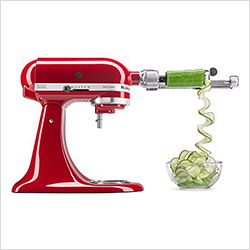
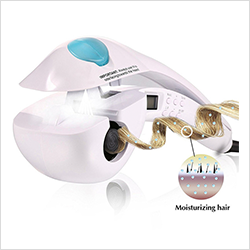
Example 4. Optimized ecommerce hero images: showing the product in use and highlighting key benefits. KitchenAid spiralizer and Denvek hair curlers. Sources: Amazon.com and AliExpress.com
Testing your hero ecommerce images
Hero product images on ecommerce websites perform two functions:
- Sales conversion: they help you stand out against competitors and persuade shoppers to buy your product.
- Mental availability: they act as an ad. They increase the likelihood that shoppers recognize your brand and consider it in future buying decisions – even if the shopper did not choose to buy your product on this occasion.
Our dedicated hero image market research solution tests the effectiveness of your image against these two functions. We predict the potential sales uplift of your new product’s hero image, carry out a findability test, and capture brand recall. We also provide guidance on further design optimization.
Our ecommerce research solution includes a simulated online store environment for in-context testing. We can build it to look like any ecommerce site, from Amazon to Alibaba, and for both mobile and desktop. Our digital techniques and global capabilities also ensure that our solution is scalable, fast and cost-effective.
Find out more about ecommerce hero image testing.
Find out more about our product innovation solutions and case stories: from exploring new opportunities, to refining your concepts and maximizing sales strategies. And read more of our latest news, research and insights.
